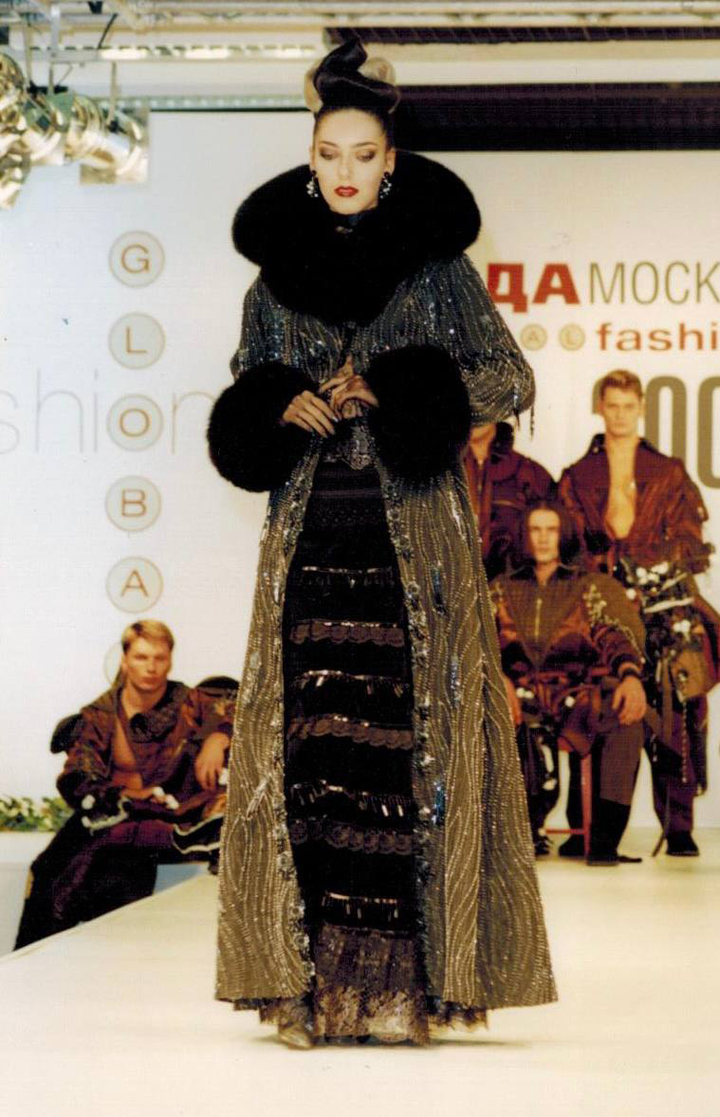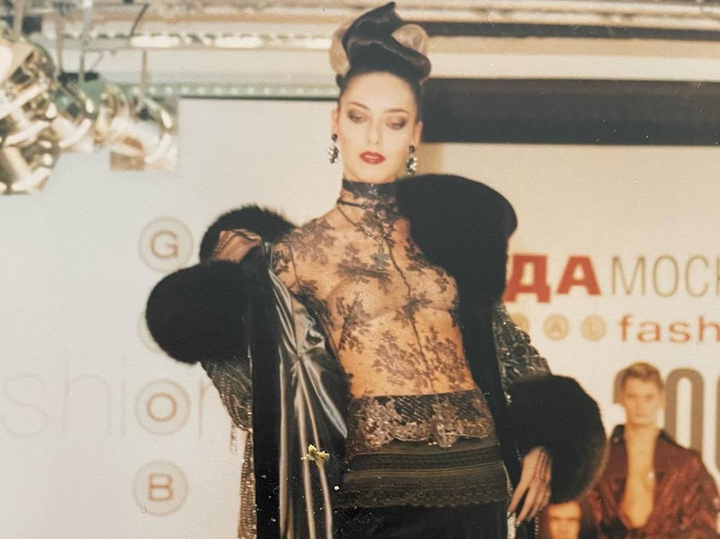“Plague” and “Temptation” by Vyacheslav Zaitsev: couturier’s dresses ended up in the Hermitage
[ad_1]
As it turned out, the exhibition is being held as part of a tour of the halls of the Restoration and Storage Center of the State Hermitage “Old Village”, which is located in a remote part of St. Petersburg.
Near the Staraya Derevnya metro station of the same name, there is a stylish modern building that impresses with its architecture. By design, it is immediately clear that it is related to art – enlarged fragments of rock art of ancient people are made on the facade.
At the entrance, I am a little upset when I learn that the exposition of Zaitsev’s works can only be seen during a tour of the entire building of the center – there is not much time, after all, I am on a business trip …
But the decision was made quickly, and now, as part of a group, I go into the storage room. A few minutes later, disappointment is replaced by complete delight, which only grows from hall to hall. The imperial clock fascinates with its chiming and ringing: wall, floor, table – they were painstakingly restored for the public by 10 master restorers of the Hermitage. The real oriental tent, donated by the Turkish sultan to Catherine II three years before the end of her reign, staggers the imagination – the guests of the excursion have the opportunity to stay inside this tent for rest.
And the most extraordinary impression is left by the halls where the wardrobe of Peter I is presented. What is unique about them is that they all look like they were just hung out of the closet – according to etiquette, the tsar wore the same suit from one to three times.
But Peter, as a true autocrat, did not care about etiquette, and among others we see his worn-out Dutch craft suit, a hunting cloak, and a skipper’s caftan. Luxurious home dressing gowns of Peter look huge – after all, as you know, the king had a height of 2 meters 4 cm.
The shoes of the king behind the glass of the stand are 40 and a half, and not 38, as is often assumed. But still, for such a growth, both of these sizes are, of course, extremely small.
It is hard to imagine how Tsar Peter, according to the stories of his contemporaries, moved rapidly in such shoes. By the way, another stereotype about the tsar is being debunked: his image in the cinema is often presented in a European cocked hat of those times. But it turns out that Tsar Peter did not like such hats, he preferred “small round hats with lapels so that you could protect yourself from the sea wind and the scorching sun.”
And now, finally, I am approaching the purpose of my visit – the hall with the works of Zaitsev and Yudashkin. Valentine’s dress is represented by one – this is the famous “half-naked” dress, a masterpiece of black transparent lace. A skin-colored petticoat is worn underneath. When putting on such a dress, it is worth considering that the color of the skin under the thin lace fabric should be combined with the color of the fabric of the skirt. Under the black lace, it gives the effect of a naked body. Effective but provocative.
In anticipation, I turn to the Zaitsev stands and … I am surprised by the words of the guide: “The first costume belongs to the Plague collection, released in the mid-1990s.” But I worked at the Fashion House and I remember this collection very well – how it contrasted sharply with the rest of it, classic collections that glorify the beauty of a woman! “Plague” is pretentious colors, broken lines, literally torn edges of dresses, grotesque make-up … The elegant suit seen was more in line with similar ones from the “Temptation” collection, released a year later.
For clarification, I turned to Nina Tarasova, curator of the collections of the State Hermitage Museum and curator of the exhibition of works by our great couturiers. Here is what she said:
– Collection “Plague” initially aroused interest because of its name. At the exhibition of 2016 from the “Plague” there was only this ensemble, which you saw in Staraya Derevnya. When I asked Vyacheslav Mikhailovich why the collection was named that way, he answered evasively: “Yes, it was,” and did not go into details. Then we had a very complex and very short (in terms of time) installation of the exposition, and we had neither the strength nor extra minutes to talk. Now I regret that many questions have remained unanswered …
Help “MK”: In 2016, the exhibition “Vyacheslav Zaitsev in the Hermitage” was held in St. Petersburg with great success. This was the first exhibition of a modern Russian couturier (before that, only works by Nadezhda Lamanova, “the supplier of the court of Her Imperial Majesty,” Nadezhda Lamanova, were exhibited in the Hermitage in 2002).
Everything was done in less than 48 hours. Fabric restorers, employees of the Department of Russian Culture, Hermitage volunteers took part in the installation. They were assisted by students and teachers from the University of Industrial Technology and Design. In the shortest possible time, a huge work was done to place the exposition. In my opinion, only one person did not worry about the outcome of the case during these two days: Vyacheslav Mikhailovich himself. He repeated: “Ninochka, don’t worry, everything will be fine.”

He often sat down in an armchair to rest (even then he did not feel very well), but if the Hermitage employees came to the hall to greet the Maestro or take a picture with him (and these were entire delegations), no one was refused. Moreover, Vyacheslav Mikhailovich got up, drew himself up, categorically removed his cane from the frame and smiled his famous smile. Very bright and sunny person.
The exhibition demonstrated the scale of Vyacheslav Zaitsev’s personality. It became clear that he made a real revolution in Soviet and Russian fashion! Zaitsev and I then agreed that at the end of the exhibition he would donate costumes to the collection of the State Hermitage that best reflect the characteristic features of his work.
The costumes looked especially impressive in the foyer on May 12 at the opening of the exhibition in memory of outstanding fashion designers. But there was no way to leave them there: there was too much light, the inevitable drafts of the entrance area, the absence of the conditions necessary for storing the suit in terms of temperature and humidity. So behind the glass, next to the sculpture and against the backdrop of French tapestries of the 18th century, the dresses of Vyacheslav Mikhailovich and Valentin Abramovich are very comfortable. And I, as the custodian of this collection, feel calm … After all, the heritage of fashion designers must be preserved for the national and world artistic culture …

And we, former employees of the Fashion House, remembered this: at the very beginning of the Plague collection, three “traditional” Zaitsev suits were sewn. And, apparently, just one of them is presented in the Hermitage, the color of cinnamon with black satin ribbons. And then Vyacheslav Mikhailovich was suddenly inspired by something, and on the go he changed the concept to a grotesque, decadent, outrageous, very uncharacteristic for him. So it seemed to us from the inside. Already the next collection, “Temptation”, returned to the podium the elegance and tenderness of the famous Zaitsev silhouette.
[ad_2]
Source link






